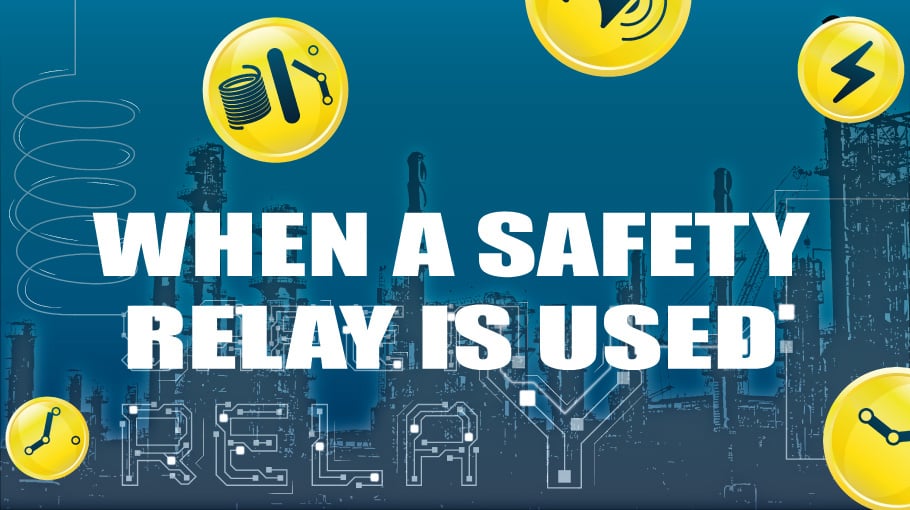The term “functional safety” came to life in the nineties. Initially, the solutions to enhance the safety of critical applications primarily involved one or more contactors. However, with the advent of the IEC 61508 standard, more advanced equipment began to prosper and populate the market. This process fostered the origin of safety relays.
Functional Safety
The International Electrotechnical Commission, with IEC 61508-0, defines functional safety as:
“…part of the overall safety that depends on a system or equipment operating correctly in response to its inputs. Functional safety is the detection of a potentially dangerous condition resulting in the activation of a protective or corrective device or mechanism to prevent hazardous events arising or providing mitigation to reduce the consequence of the hazardous event.”
Exida provides a similar definition:
“The goal of functional safety is to design an automatic safety function that will perform the intended function correctly or the system will fail in a predictable (safe) manner.”
The objective of functional safety is to ensure the unacceptability of risks of injuries or damages, directly or indirectly to people, assets, and the environment. Proper automatic protection and predefined measures must be in place to guarantee the validity of this concept. This is where a device, such as a safety relay, in combination with other apparatus, is used. A safety relay is used, or at least can be used, when functional safety is enforced by the responsible bodies.
Safety Instrumented System
Functional safety is an overarching concept, but it is necessary to take a step further to define more precisely when a safety relay is used. This second step leads us to what is defined as safety instrumented system (SIS), which is a conglomerate of electrical, electronic, and programmable systems (E/E/PS) designed to properly handle hardware failures, human errors, systematic errors, and environmental factors.
Safety instrumented systems are widely utilized in several industrial processes and contain a series of sub-systems that we will explore further in this reading (SIF). What is really important for now is to understand that a safety relay is used, or can be used, when a safety instrumented system has been defined to ensure that processes are not compromised or disrupted. A SIS is a safeguard and stands alongside the standard industrial process or production line. A safety relay takes an active part in this integrated solution and has a bearing on the reliability of the safety instrumented system.
Safety Instrumented Function
We must take another step further into the realm of functional safety to see where a safety relay is practically installed. This guides us into the so called safety instrumented function (SIF), which is the sub-system mentioned a few lines above in this article. To make this clearer, we can see functional safety as the concept applied to safety-related applications where one or more safety instrumented systems (SIS) are present to ensure protection. The same plant or industrial process may have one or more SIS depending on the field and the process itself. Within a SIS are several safety instrumented functions, which act as the workforce in this case and physically intervene in emergencies. A SIF can contain logic solvers, sensors, control elements, actuators, and safety relays that can provide the required protection degree and perform the necessary actions in response to a particular input or failure occurrence in a predictable, fail-safe manner. A practical example of a safety loop can be seen as a PLC digital output card wired to the coil of a safety relay that, in turn, drives a load in the field. The load is meant to be the final element, which can be a sounder, a beacon, a valve, or any other device that we previously defined as control elements and actuators.
Conclusions
Whenever the keyword is risk mitigation, functional safety resonates in harmony with safety instrumented systems and safety instrumented functions. These are typically employed to actively contribute to safeguarding an industrial process as much as possible. Since risk is always a constant, even if minimal, additional passive mitigation layers must still be in place because nothing should be left to uncertainty.

